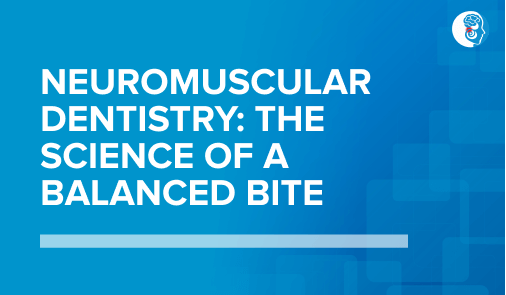
Neuromuscular Dentistry: The Science of a Balanced Bite
Your bite is more than just how your teeth come together. It also has an effect on the muscles and joints of your jaw. When
If one researches on Temporo mandibular joint disorders (TMD) on the internet, a lot of varied physio-pathologies crop up. Different schools of thoughts are present in the TMJ world. This creates a lot of confusion in the patient’s mind. And this has been the mainstay complaint of 90% of my patients in my 20 years of TMJ/Sleep practice.
One needs to first understand that no problem in this world (be it medical or political) can have just one cause. There would always be a myriad of causes. It’s upto the doctor to first be a good diagnostician to then be a good doctor. Find out all the causes of the pain by being comprehensive with their diagnostic protocols. I generally spend 90 – 120 minutes with each patient to diagnose and then make the patient understand the physiology of their problem.
In my opinion, TMD can very easily be categorised as a syndrome on it’s own. With the plethora of signs and symptoms possible, I have very regularly seen patients being mis-diagnosed and then made dependent on drugs and medicines for a long period of time. It is disappointing to see this happen in a majority of cases. The most common diagnoses of these patients are migraine, fibromyalgia, spondylitis, cervical headaches, MPDS, etc.

Confused? Well, so was I when I started to observe this in the early days of my career.
Contrary to regular night guards provided by general dentists, which merely shield teeth from clenching and grinding damage without addressing the cause, our Silensor designs maintain the mandible forward in the optimal neuromuscular position, tackling the root of these problems.
The only way to understand this concept is to first recognise that TMD is generally myogenous (muscle origin) in nature. Even the click and pop in one’s TMJ is actually the disc (which is a continuation of a muscle) being forcibly pulled in and out of the TMJ complex by complex muscle forces. Muscles control the position of the lower jaw. Not just one, but dozens. All of them need to be in harmony. Disharmonious muscles lead to unbalanced bilateral muscles leading to pain.
So, if someone has facial pain, it’s not necessary that the TMJ has become involved. It could in the future; as the TMJ is the most accommodative joint in the body.
I would like to hence classify TMD as one of the symptoms of a more complex disorder called CCMD (Cranio Cervical Mandibular Disorder). TMD, facial pain, dystonias, symptoms of TMD, etc are all part of CCMD if the origin gets diagnosed as a myogenous one.
CCMD is the only sane diagnosis of a patient so as to enable them to relate to their problems and the causes in a much more simpler way.

Your bite is more than just how your teeth come together. It also has an effect on the muscles and joints of your jaw. When

TMJ disorders can severely affect daily activities such as chewing, speaking, sleeping, and even maintaining proper posture. When jaw movement becomes restricted or pain becomes

If you are planning to get braces to straighten your teeth, it’s very obvious to have hundreds of doubts in your mind like “How long
WhatsApp us